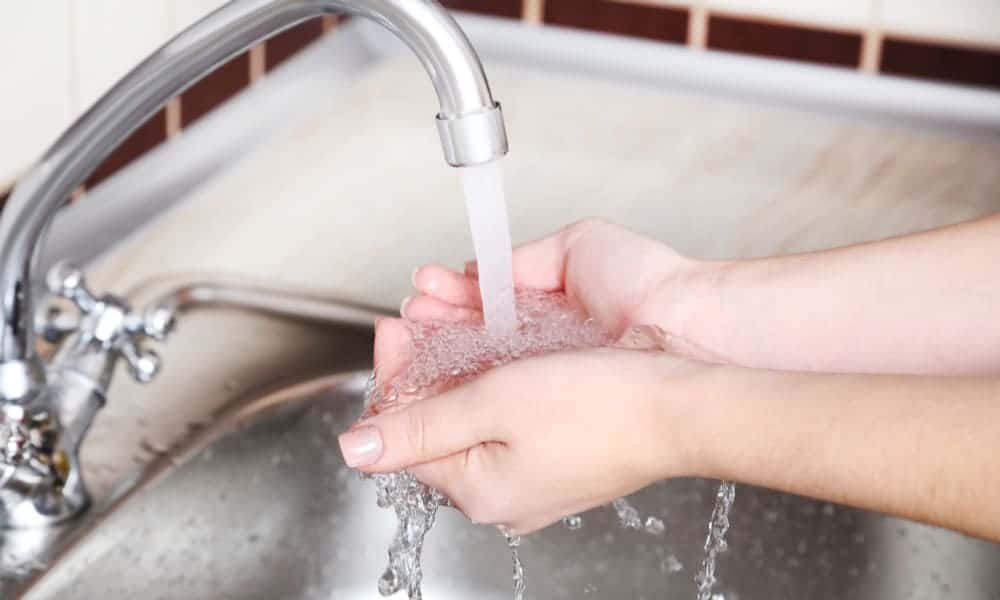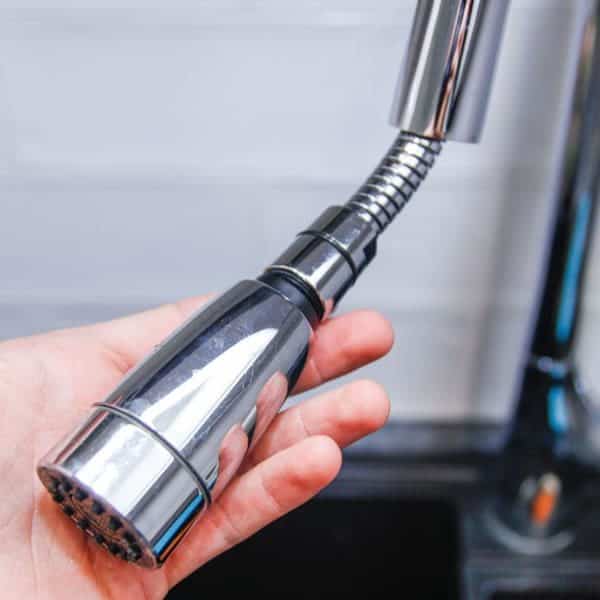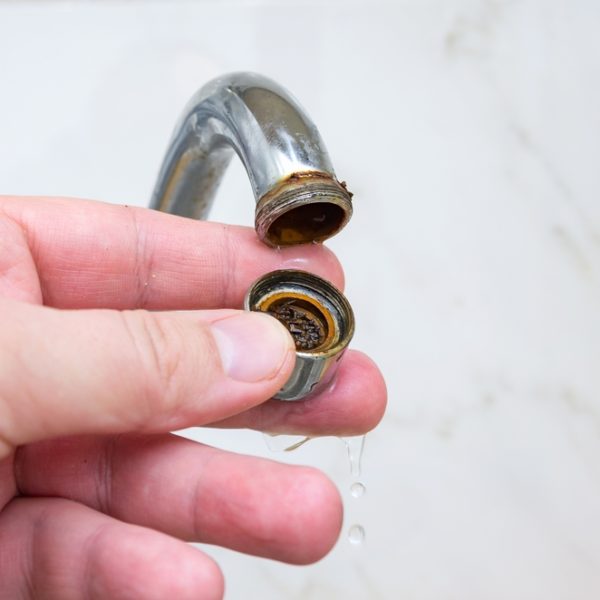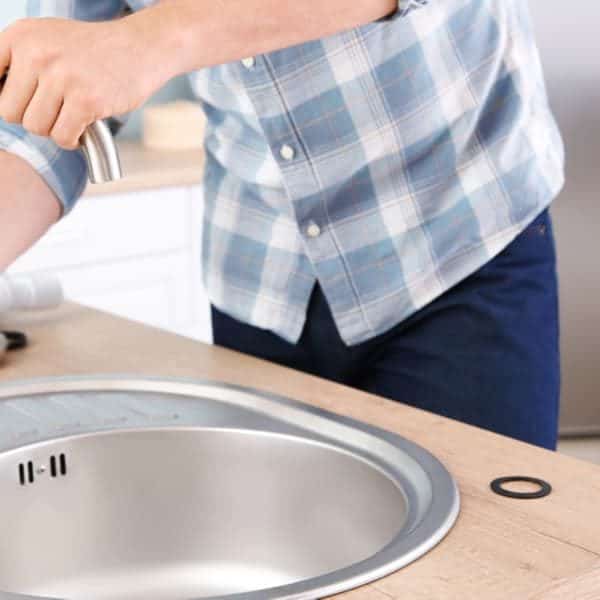The faucet is one of the most important features of your kitchen, and in most households, it is in constant use. We use the faucet for washing dishes and vegetables, we need it for drinking water and cooking, and you may even use it to wash pets or a baby.
For this reason, it’s essential that your kitchen faucet is always in perfect working order, and part of this means having the right amount of water flowing from the spout. To help you judge this and make any necessary adjustments, here we discuss kitchen faucet flow rate.
What is the maximum flow rate in the US?
In the US, the maximum flow rate for kitchen faucets – as well as bathroom faucets – is 2.2 gallons per minute (GPM) at 60 pounds per inch.
However, in certain areas, stricter limits are enforced. For example, in California, the limit currently stands at 2.0GPM – and this will eventually be reduced to 1.8GPM.
What is the standard flow rate?
Although 2.2GPM might be the maximum, many people won’t need such a high flow rate in practice, and if you can reduce the flow rate of your kitchen faucet, this can help save you some money on your water bills. So, what is considered normal?
For regular daily use – for example, washing hands, washing dishes or pouring drinking water – a flow rate of 1.5GPM would not give you noticeably less water than a faucet producing the maximum flow rate of 2.2GPM.
Many people will also find a flow rate as low as 1.0GPM perfectly acceptable, and if you don’t require more than this, you will be able to reduce your water bills significantly.
How can I test the flow rate?
Testing the flow rate of your kitchen faucet is easy. To do it, you will need a container that can hold at least one gallon of water and a stopwatch.
Place the container under the faucet and open the faucet fully. When you open the faucet, you should also start the stopwatch – for the most accurate results, try to make sure you start the stopwatch at exactly the same time as opening the faucet.
Note that you are measuring the maximum flow rate, so it is important that you open the faucet fully, and if your faucet has two handles (i.e. one for hot and one for cold), you should open them both.
Time exactly 10 seconds then shut the faucet or faucets off and measure the volume of water. Convert the measurement into gallons and multiply by six – this will tell you how many gallons per minute your faucet can deliver.
Here’s a video showing a slightly different technique using a flow measurement rate bag – but the concept is still the same.
What affects the kitchen faucet flow rate?
The flow rate can be affected by a number of factors. Since the federal limit stands at 2.2GPM, most modern faucets come with an aerator that limits the flow to 2,2GPM while also infusing the water stream with air to reduce splashing.
The flow rate also depends on the diameter of your pipes. Wider pipes allow more water to pass, resulting in a higher flow rate.
One reason water flow may be reduced is if you have a build-up of mineral deposits inside your faucet. A common problem is when this causes the aerator to become partially blocked, which will limit the amount of water that can pass through.
Other factors may include where you live – for several reasons, some areas simply have lower water pressure, which will reduce flow rate.
Also, water pressure can vary according to demand. You may notice that the flow rate is lower in the morning when all your neighbors are taking their showers before heading off to school or work.
How can I increase the kitchen faucet flow rate?
If you have measured your flow rate and feel it is too low, there are several things you can try to improve the situation.
If the aerator is restricting the flow too much, you can consider replacing it with one that allows more water to pass. If you live in a low water pressure area, an aerator designed to restrict water flow might be reducing the water flow too much.
However, before you rush out to buy a new aerator, you should also check the old one is not blocked. If you remove it from the faucet and look inside, you may see that it is filled with mineral deposits. This is an especially common issue in hard water areas.
To clean it, you can try boiling it in vinegar for half an hour – this will help dissolve and dislodge the minerals from the aerator screen.
Alternatively, you can try to unblock it by pushing a pin through each individual hole in the aerator to allow the water to pass through freely.
If this doesn’t help, you should also check for leaks in your plumbing system since if you are losing water in this way, it will also reduce the water flow in your kitchen faucet.
These tips will be true whatever kind of faucet you have, whether it’s a pull-out kitchen faucet, a touchless kitchen faucet, a commercial kitchen faucet or any other kind.
How can I reduce the flow rate?
If your water flow is too high and you want to reduce it to help save money, you can install a new aerator that restricts the flow further.
his is a good idea if you measure your water flow and find it’s too high, especially if you don’t need so much water when you open your faucet.
Adjust your flow rate to save money
It’s a good idea to measure your flow rate since this will allow you to decide whether you need to increase or decrease it.
If you find the flow rate in your kitchen faucet is too high for your needs, restricting the flow rate can help you save money on water bills by conserving water – and this is better for the planet too.











